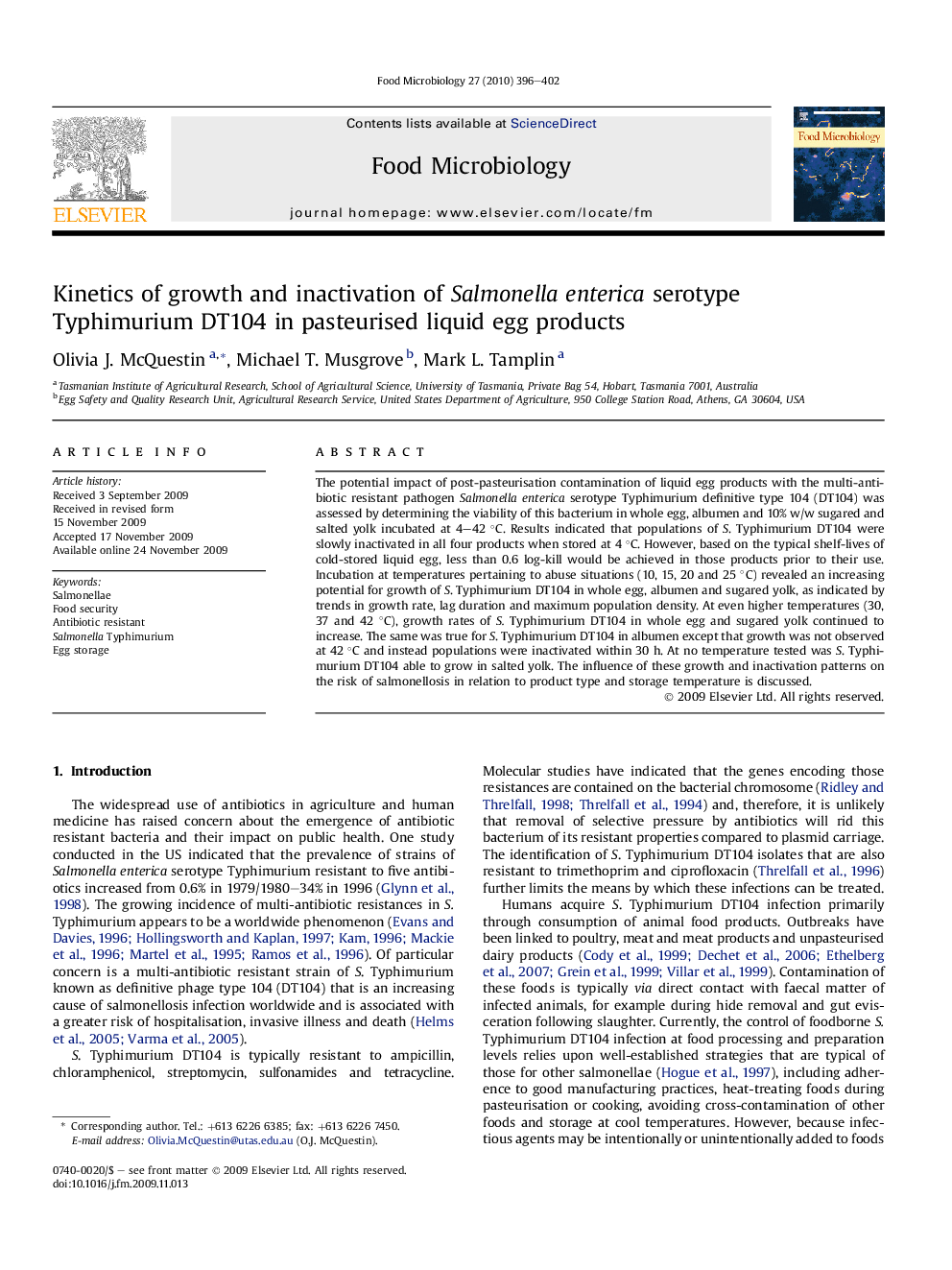| Article ID | Journal | Published Year | Pages | File Type |
|---|---|---|---|---|
| 4363428 | Food Microbiology | 2010 | 7 Pages |
The potential impact of post-pasteurisation contamination of liquid egg products with the multi-antibiotic resistant pathogen Salmonella enterica serotype Typhimurium definitive type 104 (DT104) was assessed by determining the viability of this bacterium in whole egg, albumen and 10% w/w sugared and salted yolk incubated at 4–42 °C. Results indicated that populations of S. Typhimurium DT104 were slowly inactivated in all four products when stored at 4 °C. However, based on the typical shelf-lives of cold-stored liquid egg, less than 0.6 log-kill would be achieved in those products prior to their use. Incubation at temperatures pertaining to abuse situations (10, 15, 20 and 25 °C) revealed an increasing potential for growth of S. Typhimurium DT104 in whole egg, albumen and sugared yolk, as indicated by trends in growth rate, lag duration and maximum population density. At even higher temperatures (30, 37 and 42 °C), growth rates of S. Typhimurium DT104 in whole egg and sugared yolk continued to increase. The same was true for S. Typhimurium DT104 in albumen except that growth was not observed at 42 °C and instead populations were inactivated within 30 h. At no temperature tested was S. Typhimurium DT104 able to grow in salted yolk. The influence of these growth and inactivation patterns on the risk of salmonellosis in relation to product type and storage temperature is discussed.
